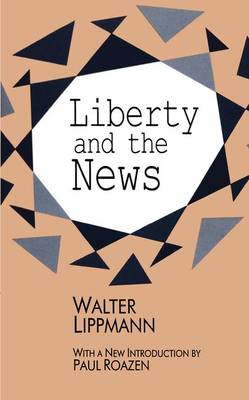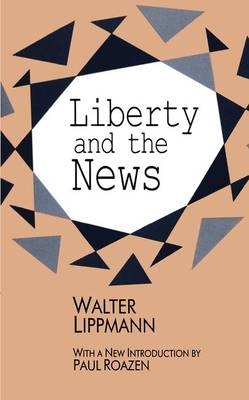
- Afhalen na 1 uur in een winkel met voorraad
- Gratis thuislevering in België vanaf € 30
- Ruim aanbod met 7 miljoen producten
- Afhalen na 1 uur in een winkel met voorraad
- Gratis thuislevering in België vanaf € 30
- Ruim aanbod met 7 miljoen producten
Zoeken
Omschrijving
This little gem of a book, which first appeared in 1920, was written in Walter Lippmann's thirtieth year. He was still full of the passionate faith in democracy that was evident in his writings before the First World War. From today's point of view, Lippmann's argument seems unusually prescient. He was troubled by distortions in newspaper journalism, but was also deeply aware of the need to protect a free press. Lippmann believed that toleration of alternative beliefs was essential to maintaining the vitality of democracy. Liberty and the News is a key transitional work in the corpus of Lippmann's writings. For it is here that he proposes that public opinion is largely a response not to truths but rather to a "pseudo-environment" which exists between people and the external world. Lippmann was worried that if the beliefs that get exchanged between people are hollow, and bear only a purely accidental relationship to the world as it truly is, then the entire case for democracy is in danger of having been built on sand. His concerns remain very much alive and important.
Specificaties
Betrokkenen
- Auteur(s):
- Uitgeverij:
Inhoud
- Aantal bladzijden:
- 100
- Taal:
- Engels
Eigenschappen
- Productcode (EAN):
- 9781560008095
- Verschijningsdatum:
- 30/01/1995
- Uitvoering:
- Paperback
- Formaat:
- Trade paperback (VS)
- Afmetingen:
- 127 mm x 203 mm
- Gewicht:
- 189 g

Alleen bij Standaard Boekhandel
+ 210 punten op je klantenkaart van Standaard Boekhandel
Beoordelingen
We publiceren alleen reviews die voldoen aan de voorwaarden voor reviews. Bekijk onze voorwaarden voor reviews.











